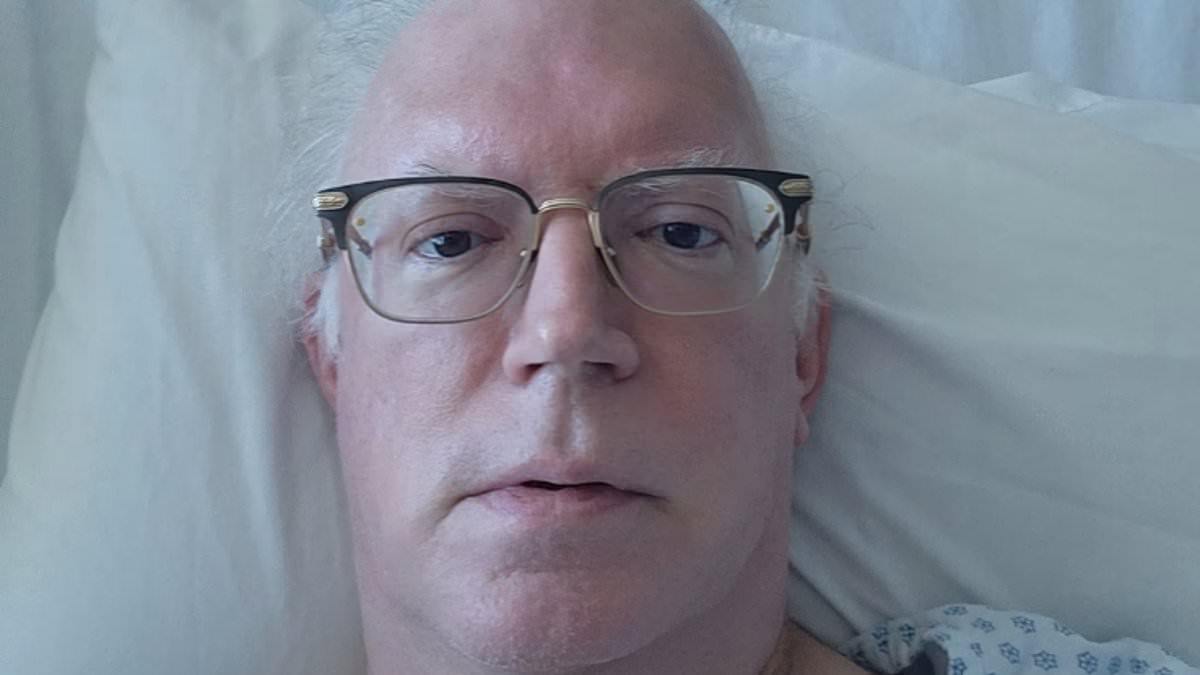Larry Boyer, 56, was told he had just six months to live after being diagnosed with stage four pancreatic cancer.
Not only is this type of cancer one of the world’s deadliest — just three percent of patients survive it — the initial tumor had spread to other organs and triggered the growth of 16 additional tumors.
As a retired data scientist, he knew the odds were against him.
But 18 months later, the father-of-two from Connecticut is alive and, miraculously, cancer-free.
Mr Boyer, a father-of-two, achieved remission thanks to an experimental therapy that involved freezing his tumors to death.

SIX MONTHS TO LIVE: Larry Boyer, 56, was diagnosed with an ultra-deadly cancer

CANCER-FREE: The father-of-two from Connecticut is still here and now in remission
Mr Boyes said: 'When I was initially diagnosed in May 2022, I was given one year to live with standard of care treatment alone, [or six months with no treatment].
'[But] the combination of my treatment... with my standard of care chemo treatment has brought me the best possible results. A year later I have no sign of cancer in my blood work or on scans.'
Mr Boyer was diagnosed with the cancer in May 2022 after going to doctors complaining of pain in his back that had recently wrapped around his chest.
At the time, he thought it was a strained muscle.
He had also lost 30lbs over the four months prior to his diagnosis, which attributed to his new fasting diet and walking 10 miles per day.
Read More
Simple tweak to cancer treatment cuts death risk by 'remarkable' 40 per cent

Mr Boyer initially went through six rounds of standard chemotherapy, which may have bought him a few extra months.
But he also began researching experimental therapies online, which led him to the Williams Cancer Institute in California.
The clinic had just begun offering a pioneering new therapy that is not yet fully approved in the US.
The two-pronged approach involves cryoablation, also called cryosurgery or cryotherapy.
This procedure sees doctors insert a small metal probe through the skin and into the tumor where extremely cold gasses are released directly into the mass to kill its cells.
The second step uses intratumoral immunotherapy, in which drugs are injected directly into a tumor to trigger an immune response.
The treatment uses two drugs; Yervoy, which stimulates white blood cells to attack the cancer, and Opdivo, which helps immune cells to recognize and destroy cancer cells.
Together, studies suggest cryoablation and immunotherapy for advanced pancreatic cancer 'can improve survival rates in patients with... metastatic pancreatic cancer.'

Mr Boyer received much of his treatment in Mexico, where drug prices are much lower than in the US. He is pictured in front of the New York City skyline
However, cryoablation has not been approved to treat pancreatic cancer in the US, which makes access patchy and incredibly expensive because it's not covered by insurance.
It has only been cleared by the FDA to treat early stage prostate cancer and breast cancer, for which there are more studies to support its benefit.
The Williams Cancer Institute is one of the few clinics in the US that does offer these treatments.
Mr Boyer traveled to Williams' clinic in Cabo San Lucas, in the Mexican state of Baja California where the procedures cost a tenth of the price in the US.
Mr Boyer received the Williams treatment schedule three times a week for three weeks on three separate occasions, with chemotherapy in between each.
He had the first round in late September and a month later doctors said Mr Boyer's liver tumor was 'liquefying'.
By early November, scans showed the large tumor in his liver had shrunk by 50 percent and the large tumor on his pancreas had reduced in size by 65 percent.
It was also revealed that 13 half-inch tumors in his liver had disappeared along with another larger mass.
Recent scans have not detected any cancerous cells in his body, meaning he is currently in remission.
He will not be declared cured and cancer free, however, until he has five years of test results that do not detect the disease.
Mr Boyer had to pay more than $125,000 out-of-pocket for the procedures, which he said he managed because he has life insurance with benefits.
He added online on the two-year anniversary of his diagnosis: 'I am reminded nearly every day how fortunate I am as people I've talked to pass away.
'Just yesterday someone who went to Dr Williams soon after I did ended up deciding to call it quits.
'I'm grateful for another year and for all the support that everyone has given me.'
Pancreatic cancer is one of the deadliest in the US because it normally doesn't cause symptoms until the later stages.
This means it is not normally diagnosed until it is stage four, when the five-year survival rate drops to about three percent.
Pancreatic cancer is the tenth most common cancer in the US, with about 66,000 Americans diagnosed with the disease.
